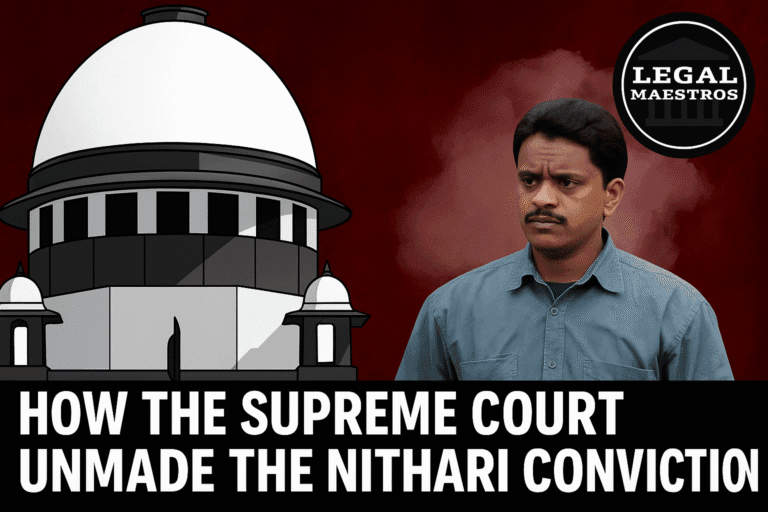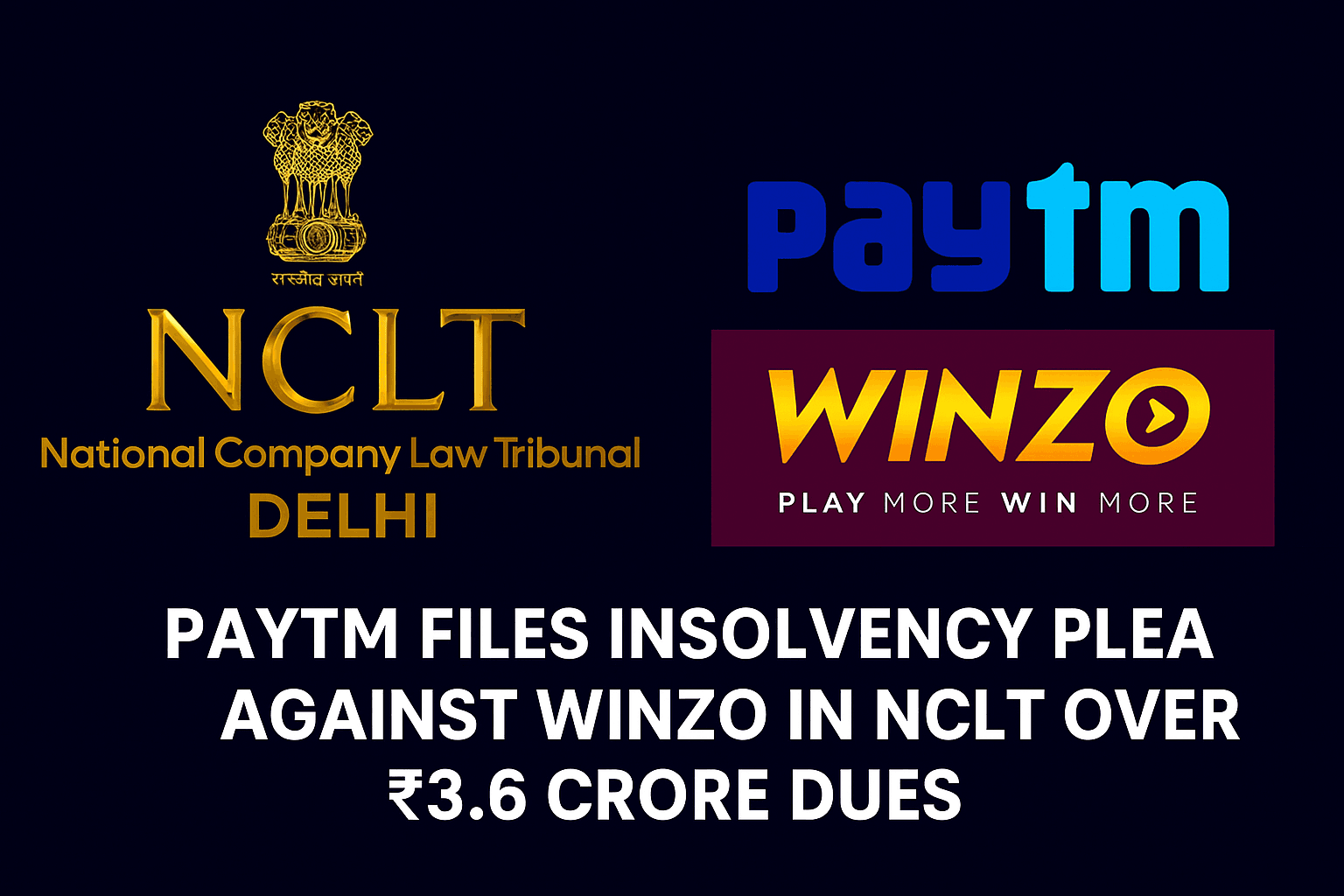
Bombay HC Upholds FIR for Laughing Emoji Reaction to Operation Sindoor Post
Introduction
In July 2025, the Bombay High Court rejected an application to quash a First Information Report made against a woman in her native Pune who, during August 2022 had replied to messages about Operation Sindoor in the WhatsApp group of a housing society she lived in with a laughing face emoji.
This case was held as her actions may create danger to the public order and oneness and there was a prima facie case against her actions.
What Happened in the WhatsApp Group
On May 7, 2025, individuals in one of the women-exclusive whatsapp forums had organized an applause party to celebrate an Indian armed forces cross-border assault against what was called as operation sindoor.
For any queries or to publish an article or post or advertisement on our platform, do call at +91 6377460764 or email us at contact@legalmaestros.com.
You may imagine friends you might have slept with on a social occasion to congratulate an achievement by the group. In this regard, all people applaud and cheer. However, a laughing emoji was used by one of the members on a greeting message in Hindi that read, Jai, the national flag is burning, accompanied by a video of the Prime Minister seated on a rocket.
Such a response evoked anger in the members of the group, as it does when a person cracks a joke during a serious event.
The First Information Report and Charges
After the spirited debates in the chat, some of the residents have filed a case at the area police station. The Bharatiya Nyaya Sanhita 2023 registered an FIR. The sections called there:
For any queries or to publish an article or post or advertisement on our platform, do call at +91 6377460764 or email us at contact@legalmaestros.com.
Section 152: Offences relating to acts threatening the sovereignty and national integrity and national unity of India. This part deals with any action that can jeopardize the national security itself.
Section 196: Sentences that generate enmity or hatred among communities. It disciplines words or actions that lead to the inception of hostility.
Section 197: Statements that are conducive to mischief. It encompasses words or actions that are likely to convene discord in the society.
For any queries or to publish an article or post or advertisement on our platform, do call at +91 6377460764 or email us at contact@legalmaestros.com.
Section 352: Criminal force or assault to prevent discharge of duty by and against a public servant. This goes further where activities come up against the way of the authorities.
Section 353: Duty of citizen to stop use of lawful power by assault or criminal force. This punishes the impeding of any civic aspect to a person
Court Book
.
To illustrate section 196, take the example of a village assembly and suppose that a person who cracks a joke at the festival of a certain community might cause offense and a vendetta. Section 196 aims to prevent discord before it escalates.
For any queries or to publish an article or post or advertisement on our platform, do call at +91 6377460764 or email us at contact@legalmaestros.com.
High Court’s Reasoning
A division bench of justices A. S. Gadkari and Rajesh S. Patil found that sharing a video with an insulting message and a laughing emoji at the moment of national pride demonstrated the appropriate mens rea or intention, of these crimes.
The accused claimed that India is a deceitful country, or makkar, and the court mentioned that the accused had roots in Pakistan, both paternal and maternal. The magazine editors noted that a teacher of her education should have considered the outcomes of her internet behavior.
Imagine the conductor of an orchestra. When an artist does not play a melodic tone on a grand finale, he or she is disturbing the balance and harmony of the music. The emoticon response was interpreted in the court as likely to cause damage to national serenity.
For any queries or to publish an article or post or advertisement on our platform, do call at +91 6377460764 or email us at contact@legalmaestros.com.
Legal Framework for Online Speech
The Bharatiya Nyaya Sanhita 2023 particularly goes after those acts that endanger national unity or orderly state. With the integration of social media reactions, it also appreciates the fact that online gestures can just be as influential as words.
Whereas the Information Technology Act 2000 gives general manuals on the content in the online world under Section 69A it complicates the specific pieces of content rather than penalizing individual responses. The new penal code helps address such a loophole by concentrating on intentions behind the words and symbols in digital worlds.
Importance of Intention
When it comes to criminal law, intention plays the important role frequently. In criminal law, intention is often important. Intention is more important than accident because a driver must have had the intention to go fast to have a speeding ticket.
For any queries or to publish an article or post or advertisement on our platform, do call at +91 6377460764 or email us at contact@legalmaestros.com.
The court noted that it is apparent that ridiculing an event that was set to commemorate the armed forces at a moment when people had rallied around the operation was clearly out to make an object of offense. The FIR is not an instance where someone has just exploded in laughter but a hazardous action that is regarded as a threat to national cohesiveness.
Conclusion
The verdict passed by the Bombay High Court highlights that even an ordinary emoji can have a huge weight attached to it when deployed in a contentious social arena. All the content and the meaning of the sections 152 196 197 352 and 353 of Bharatiya Nyaya Sanhita 2023 are to stop the speech or gestures that endanger the national integrity or the national peace.
Since digital communication increasingly becomes the centerpiece of everyday life, every user is to take his/her time to think about what his/her responses can induce for the communal harmony. A simple laugh, according to the bench, will break out into a surge of disharmony in case it is meant to spill a national pride.
For any queries or to publish an article or post or advertisement on our platform, do call at +91 6377460764 or email us at contact@legalmaestros.com.




![Research Assistantship @ Sahibnoor Singh Sindhu, [Remote; Stipend of Rs. 7.5k; Dec 2025 & Jan 2026]: Apply by Nov 14, 2025!](https://legalmaestros.com/wp-content/uploads/2025/11/Gemini_Generated_Image_s0k4u6s0k4u6s0k4-768x707.png)
![Karanjawala & Co Hiring Freshers for Legal Counsel [Immediate Joining; Full Time Position in Delhi]: Apply Now!](https://legalmaestros.com/wp-content/uploads/2025/11/Gemini_Generated_Image_52f8mg52f8mg52f8-768x711.png)